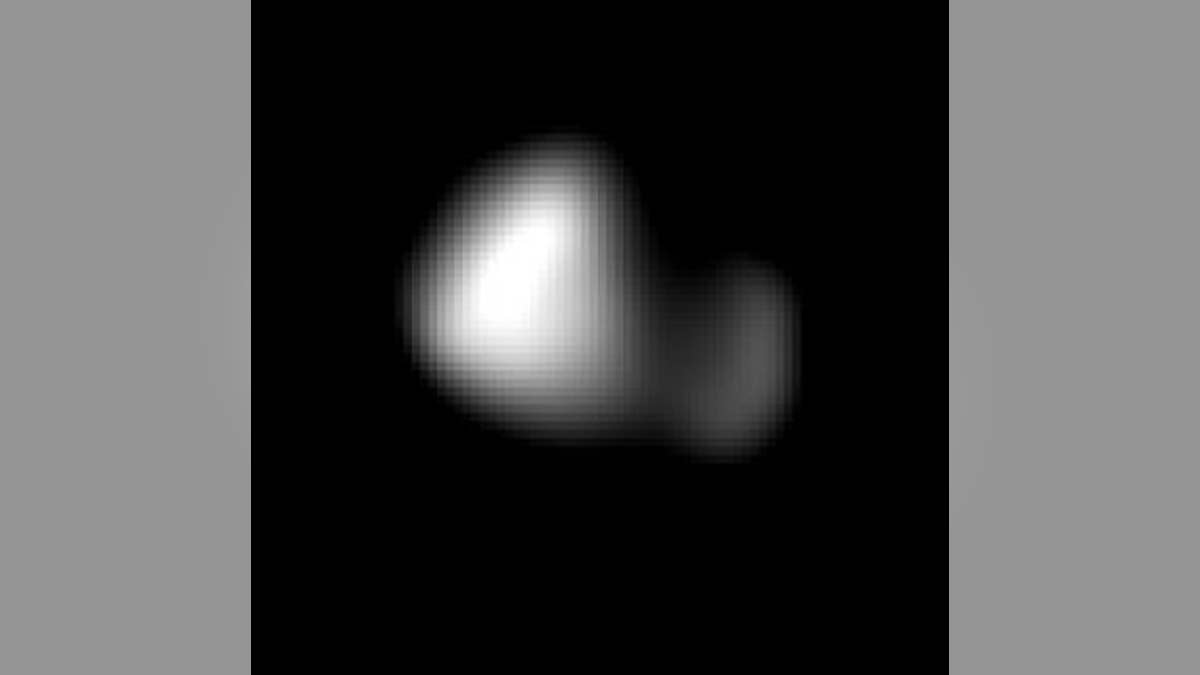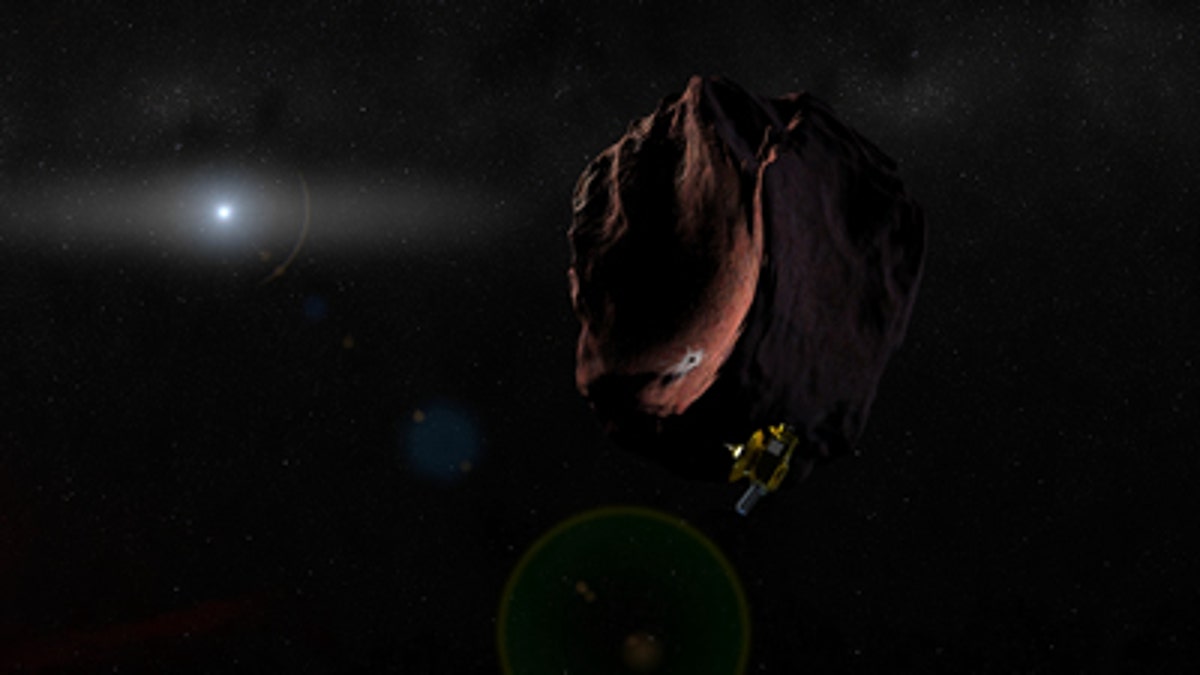
This image of Kerberos was created by combining four individual Long Range Reconnaissance Imager pictures taken on July 14, approximately seven hours before New Horizons’ closest approach to Pluto, at a range of 245,600 miles from Kerberos. Kerberos appears to have a double-lobed shape, approximately 7.4 miles across in its long dimension and 2.8 miles in its shortest dimension. (NASA/Johns Hopkins University Applied Physics Laboratory/Southwest Research Institute)
Pluto’s family portrait is complete after NASA’s New Horizons spacecraft snapped shots of its smallest moon Kerberos.
Though it looks more or less like a blob in space, the series of images is providing scientists with reams of information. Kerberos appears to be smaller than scientists expected and has a highly-reflective surface, countering predictions made prior to the Pluto flyby in July.
Related: NASA releases first Pluto flyby images
“Once again, the Pluto system has surprised us,” said New Horizons Project Scientist Hal Weaver, of the Johns Hopkins University Applied Physics Laboratory in Laurel, Md., in a statement.

This composite image shows a sliver of Pluto’s large moon, Charon, and all four of Pluto’s small moons, as resolved by the Long Range Reconnaissance Imager (LORRI) on the New Horizons spacecraft. (Image credit: NASA/Johns Hopkins University Applied Physics Laboratory/Southwest Research Institute)
Downlinked from the New Horizons spacecraft on Oct. 20, Kerberos appears to have a double-lobed shape, with the larger lobe approximately 5 miles across and the smaller lobe approximately 3 miles across. The unusual shape has scientists suspecting it may have been formed from the merger of two smaller objects.
The moon’s reflectivity – similar to Pluto’s other moons – would suggest that Kerberos is coated with water ice.
Initially, scientists had used Hubble Space Telescope images to “weigh” Kerberos by measuring its gravitational influence on its neighboring moons. The influence was surprisingly strong, prompting scientists to theorize that Kerberos was relatively large and massive, appearing faint only because its surface was covered in dark material.
Related: NASA releases dramatic new Pluto images
The latest images, however, proved that theory wrong.
“Our predictions were nearly spot-on for the other small moons, but not for Kerberos,” said New Horizons co-investigator Mark Showalter, of the SETI Institute in Mountain View, Calif., in the statement.
Much of the attention until now has been on Pluto's moon Charon, which is by far the largest with a diameter of 751 miles. Nix and Hydra have comparable sizes, approximately 25 miles across in their longest dimension above. Kerberos and Styx are much smaller and have comparable sizes, roughly 6-7 miles across in their longest dimension.
All four small moons have highly elongated shapes, a characteristic thought to be typical of small bodies in the Kuiper Belt.
Related: New NASA images show Pluto’s moon Charon in stunning detail

Artist's impression of NASA's New Horizons spacecraft encountering a Pluto-like object in the distant Kuiper Belt. (Credit: NASA/Johns Hopkins University Applied Physics Laboratory/Southwest Research Institute/Steve Gribben)
The next target for the New Horizon’s spacecraft is 2014 MU69 – a small Kuiper Belt object about a billion miles beyond Pluto. To send it towards this object, the first of several maneuvers was carried out on Thursday. Two of the spacecraft’s small hydrazine-fueled thrusters were used to change the spacecraft’s trajectory by about 32 feet per second.
All told, four maneuvers will change New Horizons’ trajectory by approximately 187 feet per second, nudging it toward a prospective close encounter with MU69 on Jan. 1, 2019. That flyby would be part of an extended mission that NASA still must approve. The New Horizons team will submit a formal proposal to NASA for that mission in early 2016.
New Horizons is approximately 74 million miles beyond Pluto and 3.16 billion miles from Earth.




















